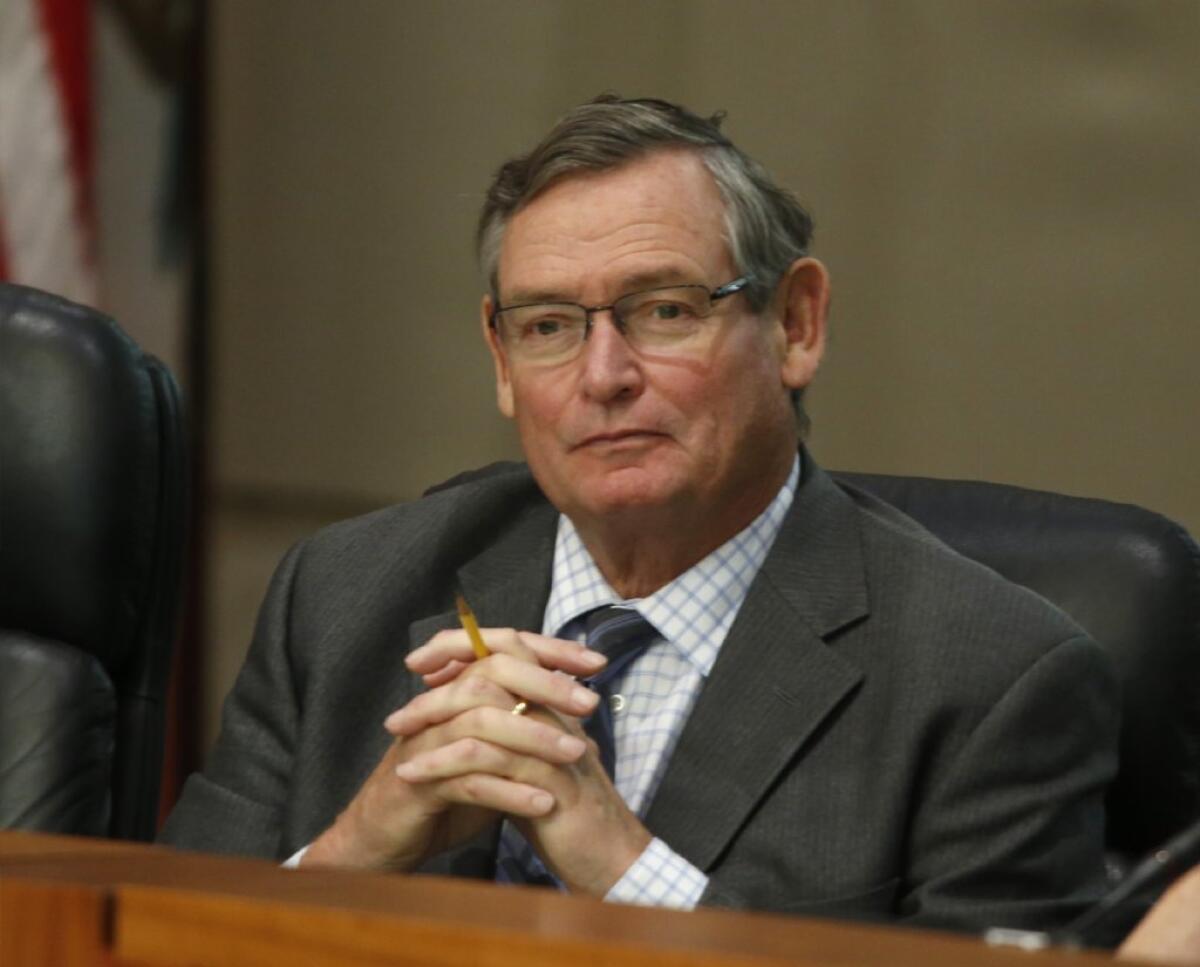Cal State faculty caution trustees that deadline to loosen course requirements is too rushed

Cal State faculty members lined up at the mic at the board of trustees meeting Tuesday to express their concerns about executive orders aimed at helping students graduate sooner by dropping non-credit remedial classes and loosening math requirements.
They said they were worried about the speed of the changes, which campuses are supposed to institute by next fall. They said they hadn’t been given enough time to weigh in on how best to make the transition, and that rushing might jeopardize educational quality.
“The faculty are justifiably suspicious,” Katherine Stevenson, who runs the developmental math program at
Jennifer Eagan, president of the California Faculty Assn., said that union members voted unanimously last week on resolutions calling for the orders to be rescinded. Administrators decided on the major changes, she said, without “meaningful consultation with faculty.”
In September, the systemwide Academic Senate had passed a resolution warning of “rushed and poorly designed implementation.”
After the faculty comment period, administrators gave trustees a progress update on Cal State’s efforts to lift its four-year graduation rate to 40% by 2025. Today’s rate of 23% is the highest in Cal State’s history.
About 7,000 more students graduated from Cal State this year than last, and the more than 98,700 earning undergraduate degrees was the highest ever in a single academic year.
Good progress is being made, said James T. Minor, Cal State’s senior strategist for academic success and inclusive excellence. “It's only through critical work like this and continued investment that the CSU will be able to dramatically improve student success outcomes for all students and particularly those from historically underserved backgrounds.”
Administrators said they began consulting with faculty on the changes in the executive orders in March 2016 and hoped they could move forward collaboratively. To make the transition easier, they said, they’ve allocated about $10 million for faculty training and professional development conferences on designing new courses and restructuring academic preparation.
Chancellor Timothy P. White issued the executive orders in August, calling for dramatic revisions to Cal State’s general education policy. They include allowing students to complete the general math/quantitative reasoning requirement by enrolling in courses such as personal finance, game theory, statistics and computer science — which do not require the intermediate algebra prerequisite that has stymied thousands of students each year.
Dropping placement exams in math and English and noncredit remedial courses will allow thousands of freshmen to enroll right away in courses that count toward their degrees.
White left faculty largely responsible for determining the relevant prerequisites for various math and quantitative reasoning courses, as well as coming up with new and creative curriculum for first-year students. Recognizing the specific challenges certain campuses might face in redesigning courses, administrators have granted some one-year extensions.
Some trustees Tuesday acknowledged the faculty concerns, while others pointed to the system’s poor graduation rate and said change was necessary.
“We are not helping these students succeed. Status quo is simply not acceptable,” trustee Peter J. Taylor said. “We need to step back and question, well maybe we do need to change the way we're operating because the way we were doing it before simply did not work.”
Trustees also discussed the progress made to support students’ most basic needs. A year after an eye-opening study found that about 1 in 10 Cal State students are homeless and 1 in 5 don’t have steady access to adequate food, all 23 Cal State campuses now have a food pantry or food distribution program. Many have established emergency short-term housing programs and are working on initiatives such as programs that allow students to donate unused meals from their meal plans to classmates in need.
Administrators hope for more state funding to continue such work, and to enroll more students and help them graduate in four years. But based on Gov. Jerry Brown’s current budget plan, they expect to get $161 million less than they say they need for next fiscal year.
Trustees were reluctant Tuesday to discuss the possibility of another tuition increase to bridge the difference, and asked administrators to present alternatives at their next meeting in January.
“Looking forward at the math, I get nauseous. The options before us are really not pleasant,” Taylor said. “We have some really very challenging decisions ahead of us. And I think putting together a realistic list of cuts has to be one of the options going forward. We all hope Sacramento arrives on a white horse and saves the day. That would be the best option. But we've got to be prepared in case that doesn't happen. And we just can't immediately default to 'OK, a tuition increase will make up the difference.’”
The trustees meeting will continue Wednesday. A live stream of the open sessions can be viewed here.
Follow @RosannaXia for more education news
Sign up for Essential California
The most important California stories and recommendations in your inbox every morning.
You may occasionally receive promotional content from the Los Angeles Times.







